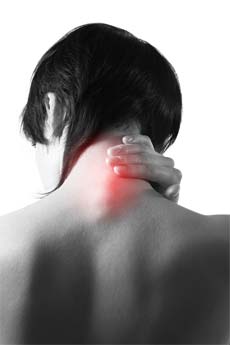fitness news
![]() ,
,![]()
Font size Women’s Health
Prevalence and risk factor of neck pain in elderly Korean community residents
– Reported, May 25, 2013

Neck pain is a common musculoskeletal condition, which causes work absenteesism, disability, and substantial medical cost. In a cohort study in Ontario, the estimated percentage of lost time for claimants with neck pain was 11.3% and male workers between the ages of 20 and 39 yr were the most likely to experience an episode of work absenteeism caused by neck pain. Neck pain is usually mild and does not result in major disability in most cases, but significant correlations between neck pain intensity and disability are present. In Korea, prevalence of neck pain in community based population, especially in older subjects, has scarcely been reported.
Prevalence of neck pain among women was higher than among men, except for the prevalence in 40-50 yr-old group. In other studies, higher prevalence of neck pain among women is also reported . This can be explained by the general tendency of higher prevalence of musculoskeletal complaints among women, and more specifically, biological factor such as lower strength of shoulder girdle muscle among women . Higher prevalence of musculoskeletal pain among women is explained by 3 factors : 1) women are more willing to report musculoskeletal pain; 2) women are more exposed to risk factors for musculoskeletal pain (exposure model); and 3) women are more vulnerable to develop musculoskeletal pain meaning that women react in different way to risk factors for musculoskeletal pain (vulnerability model). The gender difference in vulnerability may be due to sex-linked biologic factors (hormones or physiology), difference in pain sensitivity, or difference in social or psychological factors.
Obesity was associated with 6-month and lifetime prevalence of neck pain, while smoking was associated with lifetime and point prevalence. It is notable that in contrast to lower back pain, age was not significantly associated with neck pain. This result is in line with previous data showing that the prevalence of neck pain peaks in the middle age and declines in later life . It can be speculated that compared to lower back pain, neck pain may be less affected by the progression of age-related degenerative change in the spine. The association of obesity with neck pain was also reported in previous studies . Compared to other weight-bearing joints, such as the knee and lumbar spine, neck may be less vulnerable to adverse biomechanical effect stemming from obesity. On the other hand, metabolic factors might be responsible for neck pain as in generalized osteoarthritis. A study examining the association between the metabolic syndrome and persistent chronic pain syndromes showed that hypothalamus-pituitary-adrenal stress axis dysfunction plays a role . The association between smoking and neck pain was also reported in other studies . suggested that this association could arise from a pharmacological effect of tobacco smoke (for example, on neurological processing of sensory information or nutrition of peripheral tissues); another possibility is that people with a lower threshold for reporting pain and disability are more likely to take up and continue smoking.
In conclusion, this is the first large-scale Korean study estimating the prevalence of neck pain in elderly population. Lifetime prevalence of neck pain was 20.8% in our subjects with women having a higher prevalence. Although the majority of individuals had low-intensity/low-disability pain, subjects with neck pain had a significantly worse SF-12 score indicating that neck pain has significant health impact.
CREDITS.
For more Korea News Click Here